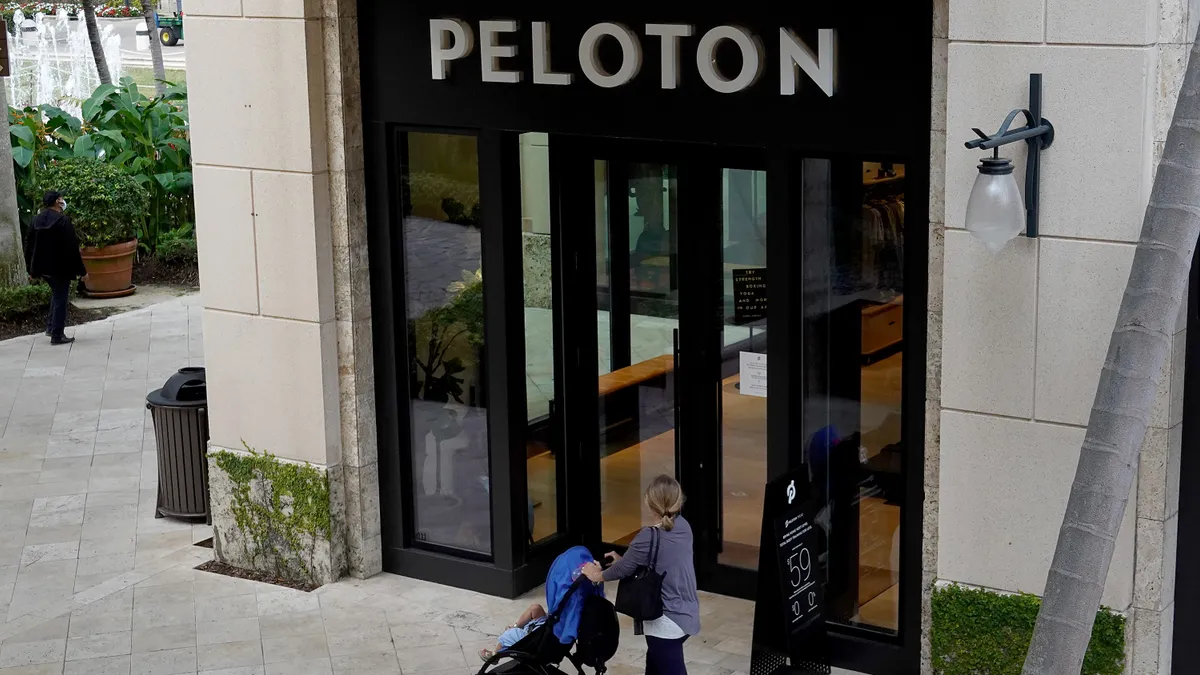Dive Brief:
- Fitness company Peloton is focusing on right-sizing its cost structure as it strives for breakeven status in the fourth quarter of this year, CFO Liz Coddington said Thursday at the Morgan Stanley Technology, Media and Telecom Conference.
- The New York-based company is leaning into its rent-to-buy program, business-to-business offerings and generating additional revenue from app subscribers.
- Peloton is working to contain the effects of a pullback in demand after explosive growth during the pandemic. The company initially had planned to return to positive cash flow by the quarter ended June 2023, but costs related to a bike recall and other expenses delayed its march to breakeven status.
Dive Insight:
Coddington was appointed CFO in June 2022 to help drive a cost-cutting plan initiated by CEO Barry McCarthy, who joined the company earlier that year.
The strategy included shifting away from first-party logistics to a third-party logistics outsourced model, “effectively trading a large fixed cost base for one that was much more variable,” she said. The company also cut sales, marketing, legal, human resource and finance expenditures.
Peloton is cutting costs as CFOs across industries move to offset inflation and interest rates that remain at a 23-year high. Despite these efforts, it has struggled with declining sales and app subscriber numbers. In its fiscal 2024 second quarter, Peloton reported revenue of $743.6 million, a 6% drop year over year.
The company reported a narrower net loss of $194.9 million in the fiscal second quarter compared to $335.4 million in the year-earlier quarter. While Peloton’s “connected fitness” subscriber numbers — memberships tied to owning a Peloton device — were relatively stable year over year at around 3 million, the number of paid app subscribers fell 16% compared to the year-earlier period.
Growth opportunities
Coddington sees the rollout of at-home treadmills and B2B offerings as key short-term opportunities. B2B initiatives include hardware and subscriptions sales to hotels, residential buildings and gyms, as well as corporate wellness programs.
Looking longer term, the company plans to improve its fitness software through personalization, and is leaning into international markets, she said.
‘Fitness-as-a-service’: Peloton’s bike rental program
Bike rentals, which it calls ‘fitness-as-a-service’ or FaaS, is a growing business for Peloton, especially since it leverages refurbished inventory. Peloton’s FaaS offering is now a $100 million run rate business, growing slightly 300% year over year in the second quarter of fiscal year 2024, CEO Barry McCarthy said on the company's earnings call last month.
Coddington said the company aims to achieve an 18-month customer buyback period for bike rentals, especially given the high cost of customer acquisition. (Coddington said bike rental customers must pay a $150 upfront delivery fee, which is less than it costs to deliver the bike to the home.)
New pricing structure
Last year, the Peloton app — which is designed for customers using non-Peloton devices — changed its pricing structure to a tiered model, replacing the legacy $12.99 per month fee. The app tier that includes the full suite of exercise bike, treadmill, and rower workouts now costs $24.99 per month, angering some customers.
The revamped price structure contributed to a decline in the number of app subscribers across a few quarters, noted panel moderator Nathan Feather, an analyst at Morgan Stanley.
Peloton is working to improve the app experience for users, and is benefitting from the additional revenue generated from the pricing model, said Coddington.“Our app is still work in progress,” she said.











